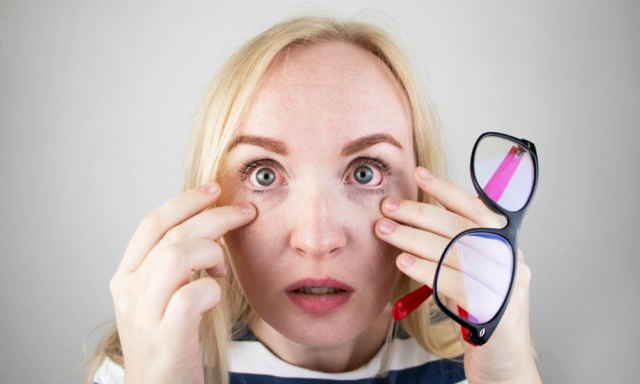
As an OD, you bridge the gap between dry eye disease (DED) symptoms and solutions. There’s currently great variability in clinical approaches to DED management. How have you been handling it?
In reference to the new Dry Eye Wheel from the World Council of Optometry, Kyle Klute, OD, FAAO, sees value in the comprehensive visual aid, but he questions how it will translate into a consistent clinical protocol or framework. In a recent Optometry Simplified write-up, he suggests steps all ODs can take to implement dry eye protocol as non-specialists.
As you decide how to best incorporate dry eye management into your practice — which will no doubt evolve as new information and treatments come to light — don’t neglect the patient education component. The intricacies of DED aren’t common knowledge. Because of its chronic nature and potentially winding treatment path, it’s important your patients have buy-in.
More than just discomfort
Many people think dry eye is just part of getting older or spending too much time on screens. Take a moment to explain that DED is a medical condition, and that they are not alone. Explain that it can be caused by inflammation, tear film instability, meibomian gland dysfunction, i.e., things they might not be able to fix with over-the-counter drops alone.
It’s also worth noting that if left untreated, DED can lead to more serious issues like corneal damage or vision impairment. Convey that, as with many health issues, early intervention is key.
Connect the dots between symptoms and triggers
Because of its name, patients might not realize that DED isn’t just about feeling “dry.” Excessive tearing is particularly confusing to patients. It’s important to explain that their dry eyes are trying to compensate for a lack of lubrication.
Triggers matter. You’ll want to help your patients identify potential triggers like prolonged screen time, contact lens wear, medications, or environmental factors.
Tailored solutions
This is the big one. Each dry eye journey is unique, and it’s essential that patients understand this. (And make sure that you, as a practitioner, don’t get stuck taking a one-size-fits-all approach.) Evaluate symptoms through questionnaires and direct conversations. Remember, patients might not volunteer symptoms unless asked specific questions.
You might start small with OTC products, nutrition and supplements, and lifestyle changes. But for each step in the treatment process, whether it’s artificial tears, prescription medications, or in-office treatments like IPL, explain the “why” behind the pivot or the escalation.
And, of course, DED management doesn’t stop after the first visit. Explain the follow-up schedule to check progress and adjust treatment as needed. Frame DED management as a partnership between you and your patient.
You’ll want your patients to understand that while DED is often chronic, a combination of therapies — like artificial tears, prescription medications, and in-office procedures — can significantly improve their symptoms and quality of life.
Lean on technology and resources
From telemedicine check-ins to automated reminders about blink exercises, there are so many ways to stay connected with your patients. Share reputable articles or videos that reinforce what you’ve discussed in the exam room. It’s a simple way to show you’re invested in the journey.
Recommended reads:
DED Simplified: How to Efficiently Diagnose, Treat, and Track Dysfunction
Managing Dry Eye in 2025: Think Bigger Picture, Multisystem
This content is intended for educational purposes only and does not substitute for clinical judgment. Treatment decisions should be based on individual patient needs, professional guidelines, and a comprehensive clinical evaluation.




